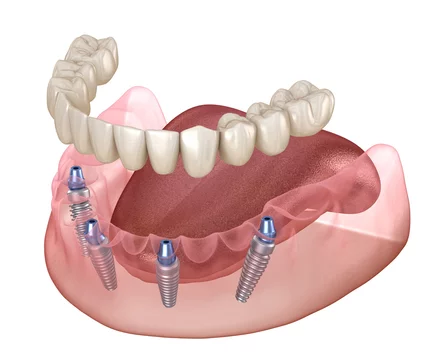Endosteal vs. Subperiosteal Dental Implants: Which One is Right for You?

Endosteal vs Subperiosteal: Dental implants for seniors have become a popular choice for tooth replacement, especially among seniors. However, not all dental implants are the same. In this article, we will discuss the two main types of dental implants endosteal and subperiosteal and help you determine which one is right for your unique dental situation.
Senior Dental Implants: Endosteal vs Subperiosteal Comparison Guide
- Endosteal Dental Implants
Endosteal dental implants are the most common type of dental implant. They are placed directly into the jawbone, providing a secure and stable foundation for the replacement tooth. Endosteal implants are typically made of titanium and come in the form of screws, cylinders, or plates.
Ideal Candidates: Endosteal implants are best suited for patients with healthy jawbone density and sufficient bone height. They are an excellent option for seniors who have lost one or more teeth due to injury, decay, or gum disease.
- Subperiosteal Dental Implants
Subperiosteal dental implants are placed on top of the jawbone but beneath the gum tissue. This type of implant uses a metal framework that protrudes through the gums to hold the replacement tooth. Subperiosteal implants are less common than endosteal implants but can be a viable option for patients with insufficient bone height or those who cannot undergo a bone graft.
Ideal Candidates: Subperiosteal implants are suitable for seniors with a shallow jawbone or those who are not candidates for bone grafting procedures. They can also be an option for patients who require multiple tooth replacements and have insufficient bone structure to support endosteal implants.
Comparing Endosteal and Subperiosteal Implants
- Surgical Procedure
Endosteal implants require a two-stage surgical procedure. In the first stage, the implant is placed into the jawbone, followed by a healing period of several months. In the second stage, the abutment and dental crown are attached to the implant.
Subperiosteal implants usually involve a single-stage surgical procedure. The metal framework is placed on top of the jawbone, and the gum tissue is sutured closed, allowing the framework to protrude through the gums. After the healing period, the dental crown is attached to the framework.
- Success Rate
Endosteal implants have a higher success rate compared to subperiosteal implants due to their direct integration with the jawbone. However, both types of implants can offer long-lasting and successful results when performed by a skilled dental professional and properly maintained by the patient.
- Recovery Time
Recovery time for both types of dental implants can vary depending on the patient’s overall health, the number of implants placed, and the complexity of the procedure. Generally, endosteal implants may require a slightly longer healing period due to the two-stage process.
Conclusion
Choosing between endosteal and subperiosteal dental implants depends on your individual dental needs and the condition of your jawbone. Consulting with an experienced dental professional is crucial to determine the best option for your situation. Both types of dental implants can provide a secure and natural-looking tooth replacement, enhancing your smile and improving your overall dental health.
Follow us on Facebook